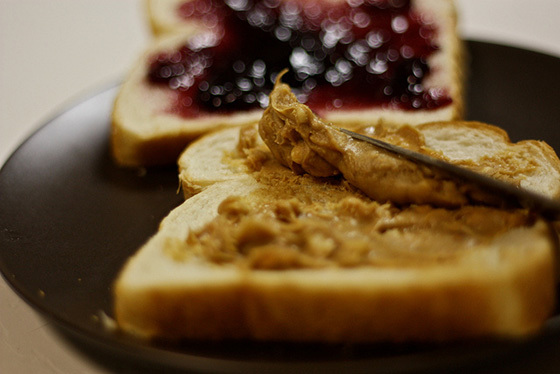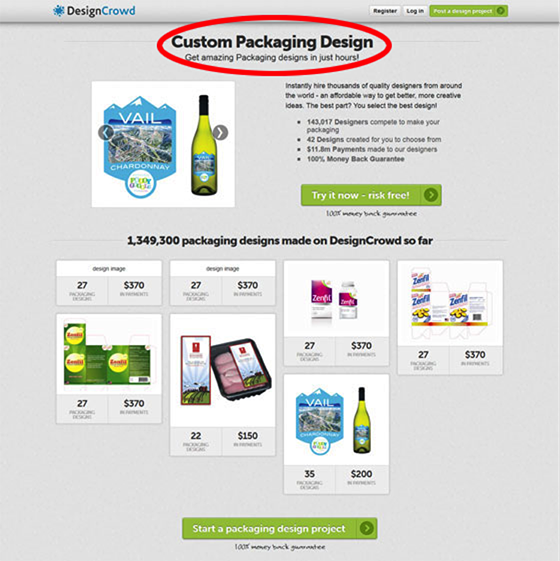4 major PPC advertising errors that make it ineffective

Combining advertising PPC campaigns with a conversion page is one of the best ways to achieve a high efficiency ratio, but only if they work in pairs to achieve a single goal.
All of the above boils down to the following: if the traffic on the conversion page is of poor quality, the conversion rates will suffer. If your landing page and PPC campaign settings aren’t combined with each other, like peanut butter and jam, your marketing funds will be wasted.
Here are four major mistakes that may prevent you from successfully managing your campaigns, and possible solutions.
')
ERROR 1: YOU DON'T REMOVE INEFFECTIVE KEYWORDS
Especially in a large account, where they are difficult to notice. Develop the habit of adding new keywords, occasionally removing ineffective ones.
Most often this error leads to the following results:
- This creates a negative experience for someone who clicks on your ad, goes to the page and does not find what he was looking for.
- For you, such an ad, directing to your conversion page, will be the result of a low efficiency ratio, higher cost per click and lower account quality score.
- To avoid this, you need to establish some hard and fast rules for yourself and determine what your keywords are for and how they relate to the conversion page (in terms of matching your offers, call to action and buyer's intentions). Perhaps your landing page repeats the mistakes that were disassembled here?
SOLUTION: LEAVE ONLY THOSE KEYWORDS THAT REALLY WORK
Do not let useless words eat your budget. Build a simple set of keywords for a specific group of campaigns and set up rules for yourself regarding advertisements such as CTR and CPR. The rules that you set will be unique to your account and keywords, and will serve the common goal of achieving high incomes and attracting potential buyers.
Here are some rules for evaluating your keywords:
- TR (clickthrough rate) - an indicator of the significance of which is high; if it is low, then most likely you have a low Quality Score (QS), which means that you pay more cost per click (CPC) than you need.
- You should have a perfectly planned CPA model (a model of relationship with the advertiser, which provides for the payment of advertising in the case of the user making a particular purchase or action). Conversion should not be too expensive. If you do not know what price to set, you need to learn the basic rules of doing business.
- If in the TR model the keyword is less than 1%, and CPA is twice the price of the product, this keyword is considered “expensive”.
- Upload keywords to the ad group, and then filter according to your rules, which will help you quickly identify ineffective ones. You can quickly block or delete them.
ERROR 2: YOU DO NOT HAVE A STRATEGY FOR THE DAYS OF YOUR BUDGET
Traffic on the conversion page suddenly interrupted in the middle of the day? Keyword budget ended before 10am?
PPC ad model will help you control costs!
You may have the most beautiful landing page in the universe, but if you spent your daily budget on McDonald's, do not expect a response from a restaurant like Nobu, in which case you will have to pay.
After all, if you do not have money in order to invite everyone to a restaurant, you will have to organize a picnic in nature.
SOLUTION: USE TRAFFIC DISTRIBUTION SCHEDULE
To be more rational in the distribution of your daily traffic, use the schedule. And your ads will be available during peak times.

In the cost settings, you can reduce or completely stop paying for a specific period of the day, based on efficiency and time of peak load. So you can use your budget a little longer.
A real example of using a traffic distribution graph to improve ROI
Introductory: customer making wedding invitations. Potential buyers view the page at lunchtime, but never make purchases, because this process requires thinking (the opinion of other buyers is also important) - people have little time to shop during lunchtime - they come home and complete the conversion .
What was done: an increase in budget at lunchtime on the West and East Coast (where people like to view the village at this time of day) and cut it there in the afternoon. The next increase after dinner (when many customers were most likely ready to complete the conversion), and then decrease again by the time they went to bed.
Result: the key to success in saving the budget was found; it consisted in reducing it between lunch and dinner.
If you want to translate your own idea of pricing on a particular day of the week, you should refer to the analysis of consulting companies that observe a 69% increase in CPA using the traffic distribution schedule.
Additional ways to increase your daily budget:
- Distribute campaigns and ad groups into larger ones with a small key list.
- Remove a few expensive keywords (which do not serve for the benefit of conversion) to save your money on those that really work.
ERROR 3: YOUR ADVERTISING DOES NOT MATCH CONVERSATION PAGE
Introductory: the profile of a young man on Match.com, the avatar depicts a clean-shaven young man in a little over 25.
Reality : a guy with a beard came to date, really looking his own age.
Result: discrepancy of the declared information.
Target, Amazon, and eBay are Internet sites that were notoriously inconsistent with the information stated, because they used dynamic keyword inserts in their advertisements, paid for any word, thereby attracting traffic to their pages, even if these products were not in stock.

Two real examples of how the use of dynamic keyword insertions can lead to a serious inconsistency in the stated information.
It is unlikely that someone will like the discrepancy between advertising and landing page. If you have a healthy and high CTR clickthrough rate (closer to 5%), and a conversion rate of less than 5%, there is definitely some discrepancy.
SOLUTION: POTENTIAL POTENTIAL BUYERS WITH COMPLETE COMPLIANCE WITH DECLARED INFORMATION
It is quite simple. The ad text should reflect its content on the landing page.
Check out this good example of Oli Gardner.
He asked for the “packaging design” request and received the following ad:

This ad contains a specific call to action and links to an article about social significance.
Clicking on an ad will take you to a landing page with a header from “custom packaging design.” As an added bonus, both the ad and the landing page constantly address the urgency of the situation using the tokens “today” or “within the next few hours.”

The landing page you were redirected to is titled with the same keywords as the ad.
Such a match earns points in PPC, lowers CPC costs, increases conversion rate and improves account quality score. Moreover, it is a wonderful experience for visitors, which gives them the confidence that they have made the “right click”.
PS: If your ad and conversion page match each other, and the conversion rate is still low, then you have to admit that your page scared all potential customers and it was time to read information on how to optimize the conversion page.
ERROR 4: YOUR ADVERTISING IS WRONG SEND
Creating images of potential buyers is very exciting. But! These are all lyrics, and if you don’t think about tomorrow, you’ll have trouble.
The list of keywords for PPC should not be exhausted only by the topic, it should contain words covering the context of the entire purchase cycle (information retrieval, information gathering and readiness for purchase). In other words, when making a list of keywords, you should be attentive to the buyer's intentions.
At the end of the day, you must be sure that you have answered all the queries that someone has been looking for.
If you are not attentive to the intentions of the buyer, whose understanding is the basis of high conversion, and start buying everything indiscriminately, you will find a low CTR indicator, because there will be a discrepancy between what appears in the output and what you offer.
And no one will see your beautiful landing page.
SOLUTION: FIND OUT YOUR BUYER AND CREATE A CORRECT SEND, THAT WILL PAY FOR YOURSELF ATTENTION
Introductory: a buyer who sold ready-made food cooked by cooks on a TV show. It was not fast food, but complex dishes such as saltimbocca chicken. A customer wanted to buy keywords such as fast food, a restaurant chain and frozen food.
This was problematic for two reasons:
- They did not correspond to the correct stage of the purchase cycle. If people are looking for fast food or food delivery - they want to eat it immediately.
- They were aimed at people who are not willing to pay much. Since the client was selling high-quality and fresh food for a family of four, its average price was $ 30, which is not at all the target group looking for pizza for $ 5.
What was done: When they began to discuss the image of its potential buyer, it turned out to be a working woman older than 30, with children, a couple of sources of income, and anxious about healthy food for her family.
These are not the buyers who make decisions spontaneously. This is a group that can pay more and is probably in the information search phase.
Then the keywords intended for the target group, which makes a decision spontaneously, were removed. But they added the words, the advertising text and the landing page, addressed specifically to these women, and saw an excellent result. Total traffic declined (since there were a large number of requests for the keyword “Pizza Hut”), but the quality of traffic increased significantly.

The total amount of traffic decreases (blue), conversion (orange) remains steady, and then increases with the budget increase when the correct keyword is included.
Get a potential buyer to respond to your ad campaign.
Does what the buyer sees matches the selected keywords? For example, the query “buy food” is the keyword that buyers are looking for when they are in the information search phase, while the query “where to buy food” corresponds to buyers who are already in the purchase phase.
Is Google looking for your keywords? Do the ads and articles that appear on your resource match the goals of your PPC campaign?
Ask someone. If you know someone who is in your target group, show him an advertisement or a landing page, and you will see if it is addressed to him.
IS THIS YOUR TARGET OR YOUR PPC?
When it comes to PPC, there simply cannot be the right decision, but you can hope that these examples will help you to correctly assess the current status of your campaign.
After reading about these errors, you can determine whether your ad is ineffective traffic to your landing page.
Source: https://habr.com/ru/post/245343/
All Articles